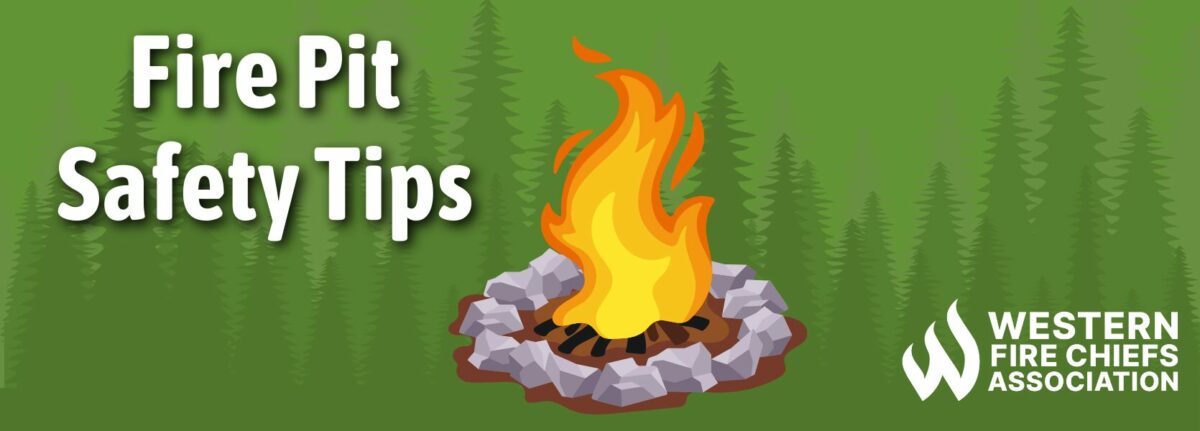Fire Pit Safety Tips
Stay safe around the campfire with tips from the Western Fire Chiefs Association. Learn essential precautions and practices for a worry-free outdoor campfire.
Stay safe around the campfire with tips from the Western Fire Chiefs Association. Learn essential precautions and practices for a worry-free outdoor campfire.
Published:April 23, 2024
Edited:April 23, 2024

Stay safe around the campfire with tips from the Western Fire Chiefs Association. Learn essential precautions and practices for fire pit safety.
Without proper precautions, fire pits can quickly get out of control, leading to accidents, injuries, or property damage. Additionally, environmental conditions like wind or dry vegetation can exacerbate fire risks. By following fire pit safety tips, individuals can reduce the likelihood of accidents and minimize the potential for harm to themselves, others, and the surrounding environment. These safety tips help to ensure that fire pit activities remain enjoyable and worry-free.
When setting up a fire pit, ensure it is placed away from any flammable materials. Opt for a location that is clear of overhanging branches, dry grass, or nearby structures that could catch fire.
Some jurisdictions may have specific rules regarding the use of fire pits, including restrictions on size, fuel types, and operating hours. Check for any local regulations or permits required in your area.
Having a well-built fire pit or ring keeps your fire safe and secure, preventing any accidents or tipping. Ensure it can withstand the heat and outdoor conditions without breaking.
Always have a container of water nearby and a garden hose on standby before starting the fire.

Choose a level spot that is 10 to 20 feet away from structures. Brush away any debris around the fire pit to prevent sparks or embers from igniting nearby materials.
Even after the flames have died down, tiny embers can still pose a threat to safety. Almost extinguished fires have been the cause of some of the most severe wildfires in U.S. history. To ensure safety, pour water over live embers and turn logs to ensure all sides of the wood have stopped burning before calling it a night. This proactive approach minimizes the risk of potential hazards and helps maintain a safe environment around the fire pit.3
Unattended fires can quickly escalate, leading to accidents, property damage, or even wildfires. Always ensure that someone is actively supervising the fire pit while it is in use.
Use only seasoned firewood or charcoal and avoid accelerants such as gasoline or lighter fluid. Accelerants can cause uncontrollable flare-ups and increase the risk of burns or injuries. Stick to safe and natural fuels to ensure a controlled and enjoyable fire pit experience.2
Expect children and pets to be curious about a fire pit. To prevent accidents or injuries, establish a clear boundary around the fire pit and ensure that children and pets are always supervised. Educate children about the hazards of fire and the importance of staying a safe distance away from the flames.
Loose-fitting clothing can easily catch fire if it comes into contact with flames or embers from the fire pit. To reduce the risk of burns or injuries, avoid wearing loose clothing while near the fire pit. Opt for snug-fitting attire made from natural fibers that are less likely to ignite.1
Overloading the fire pit with fuel can lead to uncontrollable flames and increase the risk of accidents or injuries. Follow the manufacturer’s recommendations for the maximum amount of fuel that the fire pit can safely accommodate. Avoid adding too much fuel at once, and never use flammable liquids to accelerate the fire.1
Hot ashes can remain a fire hazard for hours, potentially igniting nearby materials if not properly handled. Use a metal ash bucket with a tight-fitting lid to store the ashes until they have cooled completely.
Use water or sand to douse the flames and stir the ashes to ensure that all embers are extinguished. Never leave a fire pit burning unattended, as it poses a significant fire risk.
Wind can significantly affect the behavior of a fire pit, causing flames to spread unpredictably and increasing the risk of accidents. Exercise caution when using a fire pit in windy conditions and consider postponing your fire pit activities until the wind dies down. Always monitor the flames closely and be prepared to extinguish the fire if necessary.
Every fire pit is different, it’s essential to follow the manufacturer’s instructions for maintenance and use. This includes proper assembly, fuel recommendations, and safety precautions.
Stay safe around the campfire with tips from the Western Fire Chiefs Association. Learn essential precautions and practices for a worry-free outdoor campfire.
Discover essential firework safety tips to ensure a dazzling display without accidents. Learn how to celebrate responsibly with expert guidance from WFCA.
Explore the role of AI in wildfire prediction with guidance from the WFCA. Learn how advanced algorithms and data analytics enhance early detection and response.